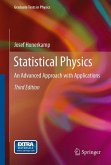This book covers systematically and in simple language the physical foundations of evolution equations, stochastic processes, and generalized Master equations applied to complex economic systems.
Strong emphasis is placed on concepts, methods and techniques for modeling, assessment and solving or estimation of economic problems in an attempt to understand the large variability of financial markets, trading and communication networks, barriers and acceleration of the economic growth as well as the kinetics of product and money flows.
The main focus of the book is on a clear physical understanding of the self-organizing principles in social and economic systems. The book is a modern introduction and a helpful tool for researchers, engineers as well as post-docs and graduate students interested in econophysics and related topics.
Econophysics describes phenomena in the development and dynamics of economic systems by using of a physicMly motivated methodology. First of all, Mandelbrot had analyzed economic and social relations in terms of modern statistical physics. Since then, the number of publications related to this topic has increased irresistible greatly. To be fair to this historical evolution, I point out, however, that physical and economic concepts had already been connected long ago. Terms such as work, power, and efficiency factor have similar physical and economic meanings. Many physical discoveries for instance in thermodynamics, optics, solid state physics, or chemical physics correspond to a parallel evolution in the fields of technology and economics. The term econophysics, or social physics, also is not a recent idea. For ex ample, in the small book Sozialphysik published in 1925 [221], R. L£mmel demonstrates how social and economic problems can be understood by applying simple physical relations. Of course, the content of early social physics and the topics of modern econophysics are widely different. Nevertheless, the basic idea (i.e., the description and the explanation of economic phenomena in terms of a physical theory) did not change over the whole time. At this point, an important warning should be pronounced.
Strong emphasis is placed on concepts, methods and techniques for modeling, assessment and solving or estimation of economic problems in an attempt to understand the large variability of financial markets, trading and communication networks, barriers and acceleration of the economic growth as well as the kinetics of product and money flows.
The main focus of the book is on a clear physical understanding of the self-organizing principles in social and economic systems. The book is a modern introduction and a helpful tool for researchers, engineers as well as post-docs and graduate students interested in econophysics and related topics.
Econophysics describes phenomena in the development and dynamics of economic systems by using of a physicMly motivated methodology. First of all, Mandelbrot had analyzed economic and social relations in terms of modern statistical physics. Since then, the number of publications related to this topic has increased irresistible greatly. To be fair to this historical evolution, I point out, however, that physical and economic concepts had already been connected long ago. Terms such as work, power, and efficiency factor have similar physical and economic meanings. Many physical discoveries for instance in thermodynamics, optics, solid state physics, or chemical physics correspond to a parallel evolution in the fields of technology and economics. The term econophysics, or social physics, also is not a recent idea. For ex ample, in the small book Sozialphysik published in 1925 [221], R. L£mmel demonstrates how social and economic problems can be understood by applying simple physical relations. Of course, the content of early social physics and the topics of modern econophysics are widely different. Nevertheless, the basic idea (i.e., the description and the explanation of economic phenomena in terms of a physical theory) did not change over the whole time. At this point, an important warning should be pronounced.








